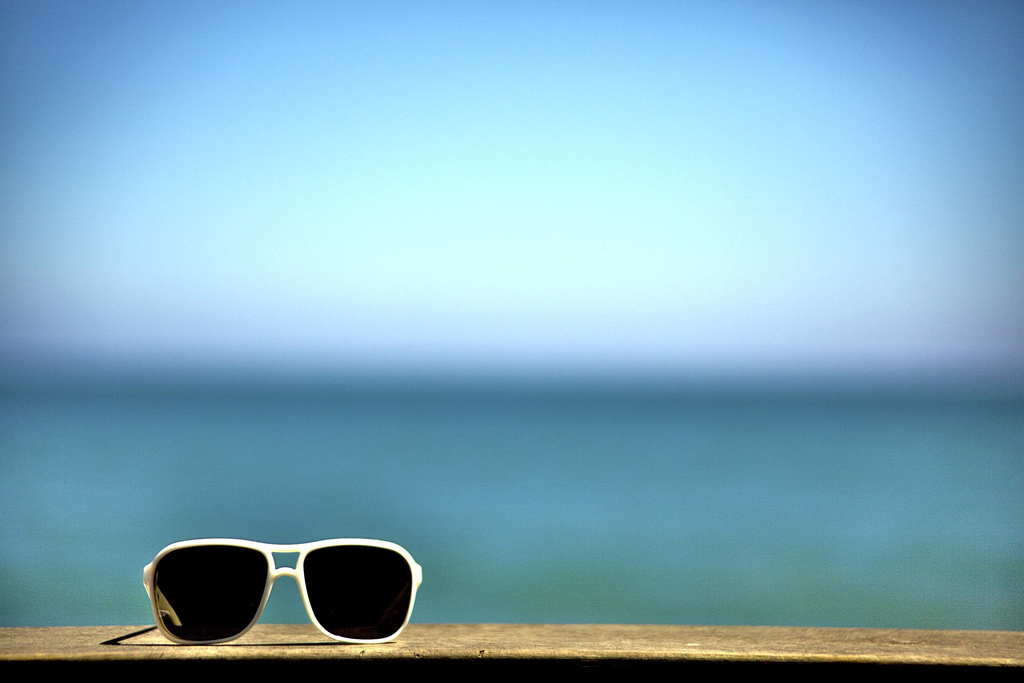Share




The word “summer” reminds us all of specific things; beach, Sun, and fun. When I was a child, I used to wait for the summer to pick up my beach toys and my float, go to the beach, build sand castles and swim until sunset; I was never annoyed by the Sun or getting tanned. However, now that I am a young woman, I have become obsessed with the effect of sunrays on my skin; I try to find places where I am not exposed to them directly so that I would not harm my skin, despite my fondness of having a summer tan.
Becoming a science communicator has changed my way of thinking and made me curious about the chemistry behind everything I use. As a result, and as we approach the summer, I found myself compelled to search and share with you some useful information about surviving the summer Sun; how to enjoy it while staying healthy.

The Downside of a Sunny Day
Soaking up the Sun's rays is one of life's greatest pleasures. Not only does a warm, sunny day perk up our spirits, it also provides us with the ideal setting to pursue many activities, including outdoor sports, leisurely walks, gardening, picnicking, among many others. Sunlight can also provide therapeutic and psychological benefits to persons with asthma, arthritis and some skin diseases, relieving some of the discomforts of these conditions. On the other hand, Sun fans stretch out on the beach or at swimming pools for hours, seeking bronzed bodies they believe to symbolize youth, fitness and attractiveness; but, is it?
Suntans, and sunburns, are caused by invisible ultraviolet (UV) rays that the Sun emits besides light rays that we can see. Ultraviolet radiation constitutes about 6% of all solar radiation that reaches Earth; 48% is visible light and 46% is infrared light. It is easier to burn more severely on a hot day because the heat increases the effects of UV radiation; it is also easier to burn at high altitudes because there is less atmosphere to block UV rays.
On the beach, you might think an umbrella would protect you. Do not be deceived; beach umbrellas do not provide full protection because UV rays can still bounce off sand, water and decks to the person lounging underneath. As a matter of fact, knowing that shiny surfaces reflect sunrays, some people use sun reflectors to increase exposure to the Sun and thereby increase their tans. This is a dangerous practice because delicate areas, such as the eyelids, ears and under the chin, can be burned severely.
Moreover, most people discount the risk of getting Sun-burnt on a cloudy or overcast day when the Sun is not shining brightly; however, up to 80% of UV rays can "penetrate" through clouds. Ironically though, by absorbing harmful rays, atmosphere pollutants such as dust, smoke and dirt offer partial protection against the risk of sunburn.
As scientists continue to discover more about how Sun exposure affects the skin, it has become painfully clear that UV rays have nasty repercussions that last much longer than the mere discomfort and embarrassment of a sunburn. The links to skin cancer, advanced aging, and skin deterioration are undeniable; consequently, more and more people are realizing the importance of protecting themselves from both Ultraviolet A (UVA) and Ultraviolet B (UVB) sunrays. The question is: What are the differences between UVA and UVB rays?
The UVB ray, often referred to as the “tanning ray”, is long-known for its role in leading to both sunburns and skin cancer. It gets its nickname because it stimulates the production of the brown pigment, melanin, by stimulating the melanocyte cell, which happens as a means of protection against UV radiation.
However, UVB exposure has undesirable side-effects; these rays are partially responsible for causing all three main types of skin cancer: basal cell carcinoma, squamous cell carcinoma, and malignant melanoma. Nevertheless, despite their serious impact, UVB rays are only capable of penetrating the silk scarf thick outer layer of the skin, or the epidermis, which contains little besides skin cells.
Unlike UVB rays, UVA rays are longer, more powerful, and are capable of penetrating through the epidermis all the way to the dermis, which contains all the “good stuff”; including collagen, elastin, and blood vessels that are responsible for showing, or hiding, age.
By ruining the dermis, cracking and shrinking collagen and elastin, and damaging blood vessels, UVA rays age the skin. Instead of having youthful skin, those who have had extended, unprotected exposure to UVA rays often have many wrinkles, age spots, and a more leathery skin texture. It is advised that preventative measures are taken because UVA rays have non-aesthetic side-effects; moreover, studies have shown links to between exposure and skin cancer.

Enjoying the Sun Safely
There are several small things you can do to avoid the negative effects of UV rays. First of all, make sure to apply sunscreen on a daily basis, and choose a sunscreen that is appropriate for your activity. Remember that harmful UV rays can affect you regardless of how cloudy it is outside, and that UVA rays are even capable of penetrating most clothes, windows, and windshields. It is, thus, important to protect yourself from them by applying broad spectrum sunscreen and wearing protective clothing every day, not just when spending a day in the Sun.
The Skin Cancer Foundation advises that you seek the shade, particularly during the Sun’s peak hours, 10:00-16:00 hr; do not let yourself burn, and avoid UV tanning booths, which provide direct exposure to the especially damaging UVA rays. Most importantly, use your discretion about how much sun exposure is enough. Moreover, the American Academy of Dermatology recommends that at least one ounce of broad-spectrum sunscreen SPF 15 or higher be applied 15-30 minutes before spending time in the Sun, and be reapplied every 2 hours.
There are several different sunscreen options that are appropriate for preventing sunburns, and other sun damage in specific situations. It is important to first realize that any type of sunscreen is always better than none, but also that no sunscreen can block all UV rays; likewise, do not select a sunblock with the assumption that it will grant you unlimited hours of harmless fun in the Sun. Sunscreen complements good judgment during summertime; it does not excuse it.

Sun Screen vs Sun Block
Many people confuse sunscreen and sunblock as being exactly the same product; but, they are not! Sunscreen is responsible for absorbing sunrays so as not to reach the skin, whereas sunblock is used to physically block the Sun's UV rays.
Sunscreen is typically a pure white, visible cream that is very messy. Although sunscreens do protect against both UVA and UVB rays, they break down after exposure to sunlight, so it will need to be reapplied every few hours to fully protect your skin. Sunblock, on the other hand, is invisible once properly applied, and blocks the majority of the Sun’s UVA and UVB rays. Unlike sunscreen, a good sunblock does not need to be reapplied every few hours.
So, which of these should you use? Depending on your age and amount of time in the Sun, the answer could be either or both. However, for most people the answer should be a sunblock.
Basking in the Sun for up to 15 minutes each day without sunblock is encouraged to absorb the necessary Vitamin D needed for healthy, strong bones and teeth. However, being outside in the Sun for prolonged periods of time without protecting your skin can lead to wrinkles, sunburns, and skin cancers. Most people turn to sunblock to protect their skin from harmful sunrays. However, not all sunblock are created equal, and if not used properly can be completely ineffective.
Unfortunately, there is no rating system to determine how good a sunblock is at protecting your skin from UVA rays; this is why it is extremely important to read the ingredient list. Sunblocks that contain titanium dioxide, zinc oxide, avobenzone, and oxybenzone with an SPF of 30 or higher are considered broad-spectrum sunblocks and are the best at protecting your skin.
Regardless of the type of sunscreen or sunblock you choose, remember that preventing skin damage before it happens will save you hardship in the future. Be smart about the amount of time you spend in the Sun and apply the suitable protection daily to ensure healthy, beautiful skin for years to come.
Glossary
*Liver spots: they are flat, brown-black spots that usually appear on the skin in sun-exposed areas of the body. They have nothing to do with the liver or liver function.
References
hair-and-beauty-tips.com
ezinearticles.com
nymiskovic.hubpages.com
healthseakers.com
healthyskinportal.com
healthyskinportal.com
nlm.nih.gov
Cover Image Designed by Freepik